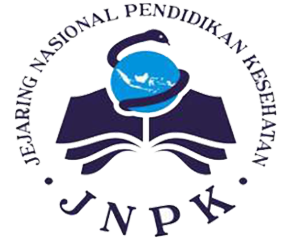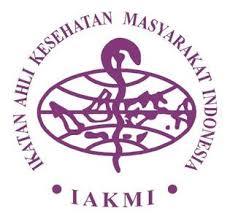Pemanfaatan Kartu Indonesia Sehat pada Pelayanan Rawat Inap Puskesmas
Abstract
Abstrak
Angka kepesertaan JKN-KIS di Puskesmas Halmahera termasuk dalam 6 Puskesmas terendah dari semua Puskesmas rawat inap yang ada di Kota Semarang. Pada tahun 2018 pelayanan rawat inap di Puskesmas Halmahera sebanyak 63,8% dengan pasien PBI (Penerima Bantuan Iuran) sebanyak 75% dan pasien non PBI (Penerima Bantuan Iuran) sebanyak 25%. Penelitian ini bertujuan untuk menganalisis faktor yang mempengaruhi pemanfaatan KIS pada pelayanan rawat inap Puskesmas Halmahera. Jenis penelitian yang digunakan adalah observasional analitik, dengan rancangan cross sectional. Sampel penelitian sebesar 53 responden dengan teknik accidental sampling. Data dianalsis menggunakan uji Chi-square. Penelitian ini dilaksanakan pada tahun 2019. Hasil penelitian menunjukan bahwa tingkat pendidikan (p=0,010; PR=2,229; 95% CI=1,127-4,407), kepemilikan KIS (p=0,000; PR=7,714; 95% CI=2,074-28,694), tingkat pengetahuan (p=0,046; PR=1,837; 95% CI=0,992-3,400), rekomendasi keluarga (p=0,005; PR=2,115; 95% CI=1,222-3,662), persepsi sakit (p=0,024; PR=2,046; 95% CI=1,042-4,018), persepsi program KIS (p=0,000; PR=8,000; 95% CI=2,776-23,056) mempengaruhi pemanfaatan KIS pada pelayanan rawat inap Puskesmas Halmahera. Sedangkan status pekerjaan (p=0,332; PR=1,410; 95% CI=0,783-2,537) dan persepsi kepuasan pasien (p=0,478; PR=1,297; 95% CI=0,753-2,236) tidak mempengaruhi pemanfaatan KIS pada pelayanan rawat inap Puskesmas Halmahera.
Abstract
The JKN-KIS membership rate at the Halmahera Health Center is among the 6 lowest Puskesmas out of all inpatient Puskesmas in the City of Semarang. In 2018 inpatient services at the Halmahera Health Center were 63.8% with PBI patients (Benefit Beneficiaries) as many as 75% and non PBI patients (Benefit Beneficiaries) as many as 25%. This study aims to analyze the factors that influence the use of KIS in Halmahera Health Center inpatient services. This type of research is observational analytic, with cross sectional design. The research sample of 53 respondents with accidental sampling technique. Analysis data using Chi-square test. The results showed that the level of education (p = 0.010; PR = 2.222; 95% CI = 1,127-4,407), KIS ownership (p = 0,000; PR = 7,714; 95% CI = 2,074-28,694), level of knowledge (p = 0,046 ; PR = 1,837; 95% CI = 0,992-3,400), family recommendation (p = 0,005; PR = 2,115; 95% CI = 1,222-3,662), pain perception (p = 0.024; PR = 2,046; 95% CI = 1,042 -4.018), perception of KIS program (p = 0,000; PR = 8,000; 95% CI = 2,776-23,056) influenced the use of KIS in Halmahera Health Center inpatient services. While the employment status (p = 0.332; PR = 1.410; 95% CI = 0.783-2.537) and the perception of patient satisfaction (p = 0.478; PR = 1.297; 95% CI = 0.753-2.236) did not affect the use of KIS in inpatient services of Halmahera Health Center.




